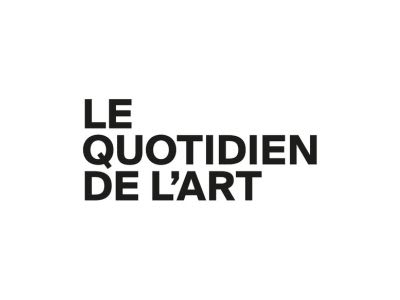Anne et Patrick Poirier: Mesopotamia
For over 40 years, Anne and Patrick Poirier have visited, carried out excavations, collected and inventoried sites and relics from ancient civilizations. This interest in travel and the discovery of world heritage is deeply rooted in their artistic practice. In the wake of Claude Lévi-Strauss's teachings, they belong to the first generation of artists who have travelled the world in an attempt to understand the organization of ancient cities, and more particularly, their disappearance.
Particularly sensitive to the complex geopolitical situation that exists in both Iraq and Syria today, Anne and Patrick Poirier position themselves as observers of the region's history, through the creation of works that stem as much from the perspective of an enlightened tourist, as they do from a kind of poetic archaeology. This is the case with the Palmyre series (1992), which includes photographs of the famous Syrian archaeological site. These "snapshots" of the ruins of the ancient city are enhanced in ink. The artificial colours that are applied to the pictures provide the old buildings with a supernatural appearance; are these the ruins of the past or the future, are they real or imaginary?
These paradoxes are also at play in their most recent work for which the camera has been replaced by satellites. Using images from Google Earth, the Poiriers produced a series of white monochrome paintings depicting the ruins in relief which appear on the surface of an untouched desert. Entitled Mesopotamia (2014-15), these paintings reproduce major archaeological sites such as the ancient city of Babylon. However, these ruins are transposed in a desert environment, a kind of futuristic landscape where only the pipelines remind us of the presence of human activity.
Produced especially for this exhibition, the carpet entitled Alep (2015) represents, at first glance, the ruins of yet another ancient city. In reality, it shows the historic centre of Aleppo photographed before the recent conflicts that have partially destroyed it. Again, satellites have allowed us to conserve images of this city, which has been classified as a World Heritage Site. In this work, the image of the city is translated via the traditional technique of carpet weaving. Produced by a family of Tibetan refugees in Kathmandu with whom Anne and Patrick Poirier became friends during a trip to Nepal in 1964, this carpet is made of fragile materials (wool, silk, bamboo fibre). The combination of cutting-edge technology and traditional art is an unexpected one. This technical anachronism accentuates the sense of alienation or distancing with regard to the representation of the contemporary world, where the boundaries between reality and fiction are increasingly permeable. In response to a civilization obsessed with the present and its media coverage, in their work, Anne and Patrick Poirier blur the distinctions between temporal and spatial cues. Their work perpetually vacillates between the memory of these ancient civilizations and the fiction of a future world.
This exhibition is also an opportunity to rediscover some of the couple's older work: the installation 2235 AP JC (2001), a huge maquette reproducing a post-apocalyptic futuristic city, Valises (1968), and the photographic series Selinunte, les paysages révolus (1973) which remind us, not without a certain sense of irony, of the innocence and personal side of contemporary tourism.
Anne and Patrick Poirier studied at the École des Arts Décoratifs in Paris and resided at the Villa Medici in Rome from 1969 to 1971. They have participated in numerous international exhibitions such as the Venice Biennale (1976, 1980 and 1984), documenta VI in Kassel (1977), and the Lyon Biennale in 2000. Their work has been exhibited in the some of the most prestigious institutions, including the Neuer Berliner Kunstverein in Berlin (1977), the Centre Georges Pompidou in Paris (1978), MoMA in New York (1979) and The Getty Research Institute in Los Angeles (2001). More recently, their work was exhibited at the Couvent de la Tourette (2013) and at the Musée des Beaux-Arts de Nantes (2014). They are currently the guest artists at the Musée Cocteau in Menton as part of the exhibition, La Chambre d'Orphée, and at the Echigo-Tsumari Art Field Triennale in Japan. Several exhibitions will be devoted to their work over the coming months' at the Musée d'Art Moderne et contemporain de Saint-Etienne and the Skulpturenpark Waldfrieden (Tony Cragg Foundation) in 2016, and at the Maison Européenne de la Photographie in 2017.
-

Anne et Patrick Poirier
Art Press, December 1, 2015 -

Anne & Patrick Poirier Galerie Mitterrand
Caroline Hancock, ARTFORUM, October 1, 2015 -

Anne et Patrick Poirier
Galerie MitterrandPhilippe Dagen, Le Monde, September 13, 2015 -

Anne et Patrick Poirier, Mesopotamia
Aujourd'hui c'est la culture de l'Occidente qui parte en mietteDamien Sausset, Le Quotidien de l'Art, September 9, 2015

